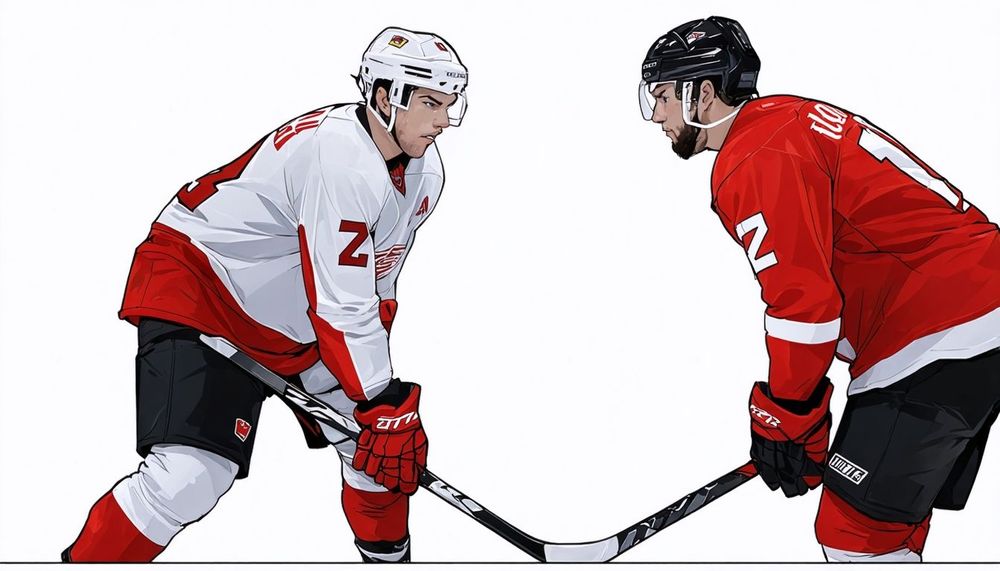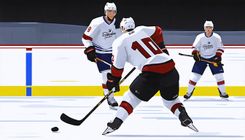Changes to the NHLs Collective Bargaining Agreement and Its Impact on Player Development

The current NHL collective bargaining agreement (CBA) is set to expire in September 2026, a fact that may evoke concern among long-time observers of the league. However, in a surprising development, the owners and the NHL Players Association reached an agreement on the framework of a new deal during the summer of 2023. Although the complete Memorandum of Understanding for the new CBA has not yet been made public, NHL insider Frank Seravalli highlighted an intriguing change: each NHL team will be permitted to assign one 19-year-old prospect to their AHL team each season. This policy could potentially affect a maximum of 32 players per year, significantly altering the development landscape for NHL prospects.
Under the existing CHL-NHL agreement, players drafted from one of Canada’s major junior leagues—the OHL, WHL, or QMJHL—must either turn 20 years old or have completed four seasons in the CHL before being assigned to the AHL or ECHL. Players drafted from other junior leagues who later joined a CHL team are exempt from this stipulation. The new CBA will not take effect until the 2026-2027 season, meaning the first players likely to be impacted will be those born in 2007. For instance, Vancouver Canucks prospect Braeden Cootes, who turns 19 in February 2026, could be assigned to the Abbotsford Canucks in the fall of that year if the Canucks’ management believes his development would benefit more from AHL competition than further WHL experience.
One significant aspect of this development is that the age condition rather than the draft year permits a freshly drafted CHL player who turns 19 in the fall directly after the draft to potentially bypass a return to the CHL. Ryan Roobroeck, a top prospect eligible for the 2026 draft, provides a prime example. As a September 2007 birthday, if Roobroeck signs his entry-level contract promptly and participates in his NHL team’s development camp, he could be directly assigned to the AHL instead of returning to the Niagara IceDogs of the OHL. This new path presents another option for CHL-affiliated prospects, a change that has been long anticipated and necessary for many. There have been cases in the past, such as Dylan Strome, where top prospects were not adequately challenged in the CHL, resulting in hindered development.
Recent examples highlight the effectiveness of this new pathway. Cole Perfetti played for the Manitoba Moose when the pandemic disrupted his OHL season in 2021, while Shane Wright was given an AHL opportunity with the Coachella Valley Firebirds during the 2023-2024 season due to unique circumstances regarding his development timeline. The specific language surrounding the new CBA clause—stating ‘one player per organization per season’—indicates that teams will not have the ability to rotate multiple 19-year-olds in and out of the AHL within a single season. This constraint may benefit NHL teams by keeping their top prospects closer for evaluation and hands-on development, while raising challenges for CHL teams eager to retain their talented players.
The limitation of one assigned player per franchise may have been influenced at least partly by the CHL, which aims to preserve its star talent. While NHL teams can each assign only one player annually, there is no cap on the number of players that each CHL team can lose to this new rule. For clubs with multiple high-level prospects, this change could pose significant challenges. It may further complicate matters for CHL teams already facing the implications of the revised CHL to NCAA eligibility rules. As it stands, while the potential lure of National Letter of Intent (NIL) deals looms, the exact effects of recent regulations on these arrangements remain to be seen.
With the introduction of this new development pathway, CHL players face reduced risk of being caught in a situation where they are neither ready to step up to the NHL nor be required to return to the CHL. The opportunity to transition to professional hockey a year earlier will allow these athletes to address weaknesses and refine strengths within a competitive AHL environment, rather than languishing in junior leagues, thus mitigating negative habits.
A prime example of a team that could effectively utilize this new option is the OHL's London Knights. Historically a dominant franchise, the Knights foster a wealth of talent, yet their success can result in players not facing challenges conducive to growth. NHL teams may opt to promote their most promising 19-year-old from the confines of a winning environment in the Knights’ system to the more rigorous atmosphere of the AHL.
Further, as Scott Wheeler, a prospect writer for The Athletic, noted, several agents have indicated that many of their players might opt for the CHL to AHL route—especially with respect to ELC signing bonuses—over joining the NCAA, a path that many are reluctant to pursue. Additionally, one CHL general manager pointed out that depending on CBA language, players might secure arbitration rights a year earlier by participating in the AHL at 19. The prospect of gaining arbitration rights ahead of schedule could emerge as a substantial benefit for players, possibly outweighing even the advantages of early professional entry. Such unintended consequences of the rule change could appeal significantly to players and their representatives while presenting challenges for NHL franchises. The possibility of a guaranteed signing bonus and salary in the AHL solidifies its appeal further, particularly as uncertainty surrounds the prospect of NIL funding in college athletics.









